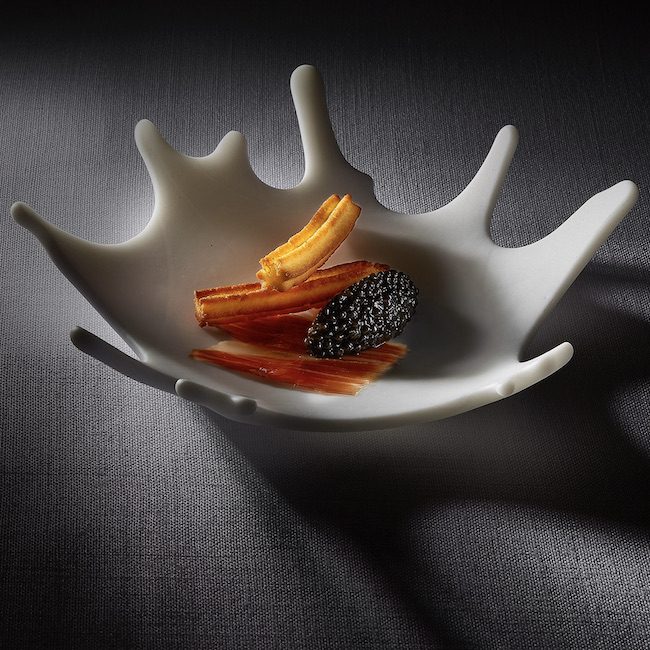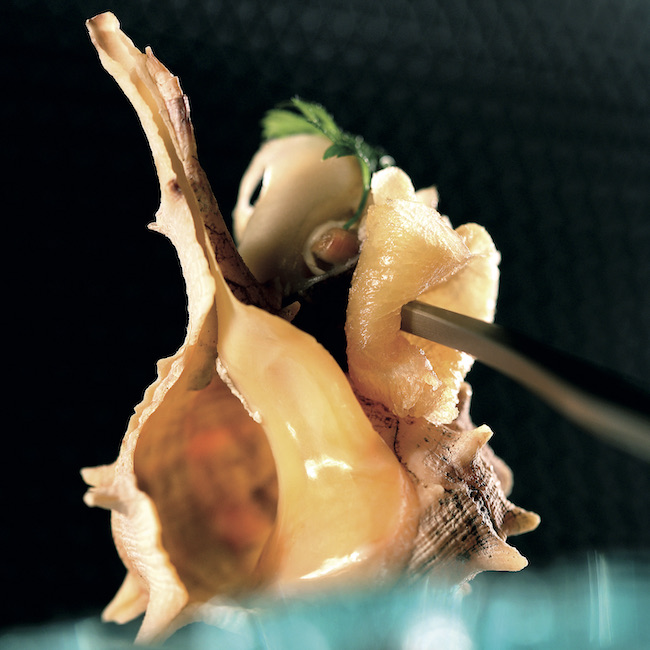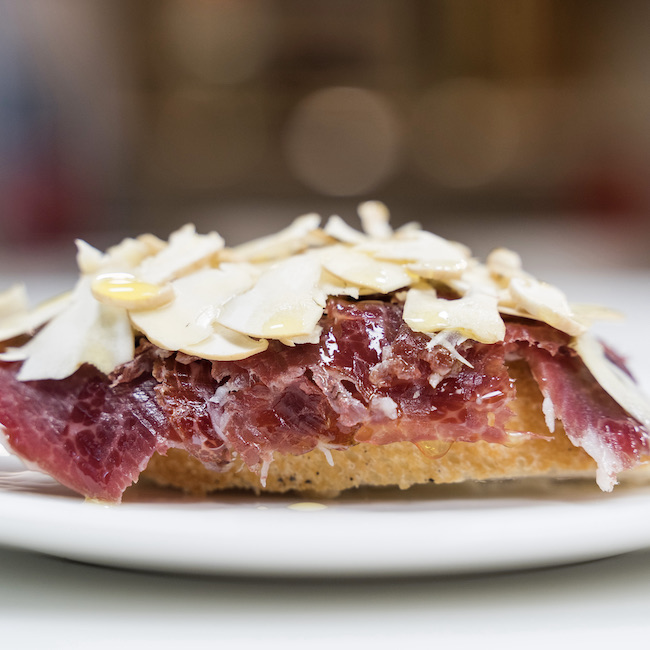.png.transform/rendition-xs/image_image%20(1).png)
Premium Products Given Pride of Place in Spanish Tapas
Coinciding with World Tapas Day on June 16th, we take a look at how the smallest nibbles have become the best way to savor Ibérico ham, top-flight anchovies, and the most exquisite cheeses
The story goes that the origin of tapas in Spain served to accompany a beverage is, above all, functional. There are several versions of how the custom of serving a bit of food with a glass of wine arose, and most say that it began as a way to protect peoples' drinks and keep them from getting dirty. In short, the idea is to tapar, or cover, the beverage in some way with a plate of anything from cold cuts, cheese, or a piece of bread; thus, an icon of gastronomic culture was born. The Spanish Royal Academy defines a tapa as "a small portion of food served to accompany a drink," but this simple and humble definition should not mislead us. Nowadays, tapas allow many of the best chefs in Spain to create haute cuisine that can be enjoyed in a single bite.
A (small) space for the creativity of great chefs
Ramón Freixa, whose restaurant in Madrid boasts two Michelin stars, is passionate about tapas. His love for this tradition is visible in the selection on his gastronomic menu, in his catering projects, and in ventures like Erre de Ramón Freixa (Cartagena de Indias, Colombia). Bite-size creations like Ibérico ham croquette, roast beef and olive oil pearls, and mini oxtail tacos with prawns and pickles leave no room for doubt. "Tapas, or miniature cuisine, not only allows us to use the most popular products, but also those of the highest quality. Through the tapa we can encapsulate the essence of gastronomy in a combination of Ibérico ham and churro (made of potato, in this case), enhanced by the subtle saltiness of caviar. "Pure delicacy, elegance and flavor," says Freixa, who recognizes that among his favorite products to serve in tapas is Ibérico ham, "a magical and inimitable product."

The small format of tapas allows Freixa to create "fascinating combinations that multiply pleasure," says the chef. There's much more than Ibérico ham and great Spanish cheeses that work well in tapas. "For example, they can include a touch of extra virgin olive oil, and another of our gastronomic jewels that can be included in tapas are anchovies, which are very versatile."
Two of Freixa's ideas that forever change the concept of what a tapa is are the cañaílla (sea snail) wrapped in Ibérico bacon fat, creating an incredible surf and turf experience, and the twice-cooked Mediterranean red prawn, with the salted head in tartare and the tail fried in breadcrumbs, which offers a wonderful contrast of flavors and textures based using a single ingredient."

From tapas to pinchos: miniature haute cuisine
According again to the Spanish Royal Academy, a pincho is "a portion of food eaten as an appetizer which is sometimes pierced with a toothpick.” Tapas and pinchos are close relatives that even share a space in the Pinchos and Tapas Contest in Valladolid, which has both a national and international reach and is the most important in Spain.
Perhaps the most gastronomic expression of the pincho is the pintxo Donostiarra, which can be found in bars in the city of San Sebastián and are extremely diverse. They can be pierced with a toothpick, presented atop a piece of bread, or served on a small plate. Aitor Santamaría, from Sukaldean restaurant (located in San Sebastián), knows a lot about this topic. He’s the son and nephew of Jesús Santamaría and Mikel Santamaría, respectively, and is responsible for turning the Donostian pintxo into miniature haute cuisine, eaten with cutlery and not with your hands.
Aitor is passionate about making nibbles "with local products, such as anchovies and black pudding from Beasain," which he prepares in a small waffle with quail eggs. He also loves being able to use seasonal products such as the tear pea and unique items such as ham and meat from Euskaltxerri pigs, which are "practically extinct.” He continues the family tradition started by his father and uncle of "preparing a menu based on dishes which include starters as well as fish and meat." A whole menu of small format delicacies.

Premium tapas to conquer the world
There's no doubt that the concept of tapas has undergone a radical transformation thanks to great Spanish chefs, moving from the role of "supporting actor" for wine and beer to being a vehicle for some of the great delicacies of Spanish gastronomy. The most renowned Spanish chefs abroad are also taking advantage of tapas' small format to offer a wide range of flavors. At chef José Pizarro's emblematic José Tapas Bar on Bermondsey Street in London, the menu features bites of Ibérico pluma cut, cod fritters and, of course, Ibérico ham. It's all served in small portions or in slightly larger portions, for sharing.
And from London to the United States. José Andrés and his tapas-based tasting menu at his Jaleo restaurants, in various locations around the country, may be the best ambassadors of this way to enjoy the best of Spanish cuisine. It's easy to understand the "small but mighty" style of presenting food when tasting his garlic prawns, Manchego cheese platters, and Ibérico pork hamburgers. Creativity and premium products to be enjoyed in one, two or, at most, three bites: never was something as small as the Spanish tapa so very big.
Author: Javier Sánchez/ @ICEX

